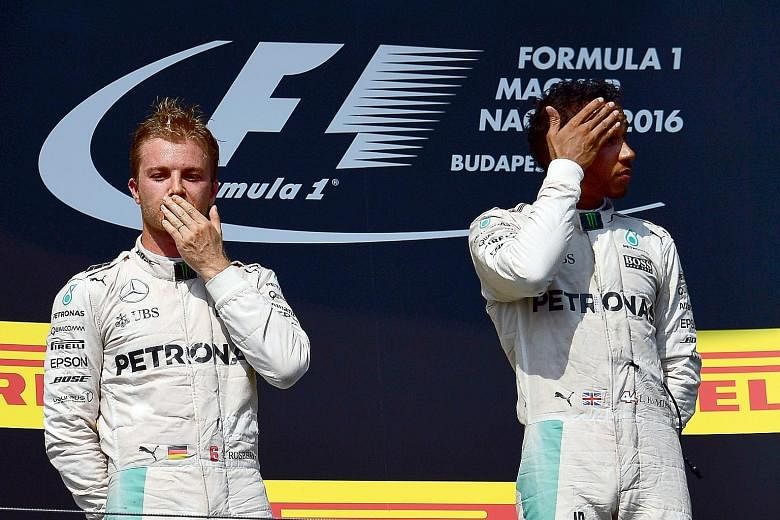As is so often the case in Formula One, all is not necessarily what it might seem on the surface.
On the face of it, when Lewis Hamilton got the subtle hurry-up from his crew at Mercedes on the 33rd lap of Sunday's Hungarian GP, and was asked to pick up the pace, it was because the team was worried that Daniel Ricciardo might yet pose a threat.
"I'm driving as best I can on these tyres," he told them, before proceeding to cut his lap times. And indeed, for a while he had been nursing some graining on the front left tyre, after the switch from the super-soft compound Pirelli tyres on which he had dominated the opening stint, to the soft compound.
But there was a school of thought that when Mercedes threatened to pit Rosberg first if he didn't get a move on, thus potentially handing him the advantage - the convention is that the man in front always gets the first pit stop - it was to stop Hamilton taking it easy in the second sector and trying to back his team-mate into the pursuing Daniel Ricciardo.
Whether that's true doesn't ultimately matter. Mercedes scored yet another 1-2 and Hamilton's 48th Grand Prix victory put him in the world championship lead for the first time this year.

But if it was, it might have been connected to the vexed subject of the manner in which Rosberg annexed the pole position that Hamilton had seemed destined to take, until he had to back off when he encountered Fernando Alonso's spun McLaren on his final lap in the last qualifying session.
Rosberg, arriving moments later after Alonso had got going again, slowed down a little under the double yellow flags, but was faster at other sections of the track which were clear, and duly beat him to the coveted pole position.
After his victory, Hamilton was asked whether he had triggered the investigation that the race stewards eventually made - and which they should have decided on much sooner - and spelled out his concerns.
"The stewards need to come up with some kind of solution because in the whole 23 years I've been racing, it's been if it's a yellow flag, you slow down, and if it's a double yellow flag, you must be prepared to stop," he said.
"Nico was doing the same speed at the apex as I was doing on the previous timed lap. If there happened to be a car that was spun or a marshal on the track, it would have been pretty hard for him to have slowed down in that case.
"The fact that he didn't get penalised for it means that we need to be careful, because the message we're sending not only to the drivers here but also to the drivers in the lower categories, is that it's now possible for you to lose only a tenth of a second in a double waved yellow flag section, which is one of the most dangerous scenarios. They need to clear that up."
Rosberg, naturally, had a different view.
"Thank you very much," he said. "Thank you for making that statement, so now I'm going to put my response. What you have to do with a double yellow is significantly reduce your speed and make sure you go safe. I went 20kmh slower into that corner - a different world in an F1 car. You are going proper slow. Everything is safe.
"So definitely I significantly reduced my speed and that's what it says you need to do and that's why for the stewards that was completely acceptable."
It was yet another intriguing insight into the differences between the two men who are destined for many more battles, now that Rosberg's newly inked Mercedes contract extension takes him, like Hamilton, to the end of 2018.
People like to believe that team-mates must be friends. But the first man you have to beat is the guy on the other side of the garage.
Rosberg has seen what was once a 43-point lead turned into a six-point deficit. Hamilton feels aggrieved that he's the one who has had all the bad luck this year, especially with engines and ancillaries.
The sandbagging story might be complete hogwash. But on the other hand, it wouldn't be hard to believe there is some basis to it. This is a high-stakes battle, physically and psychologically.


